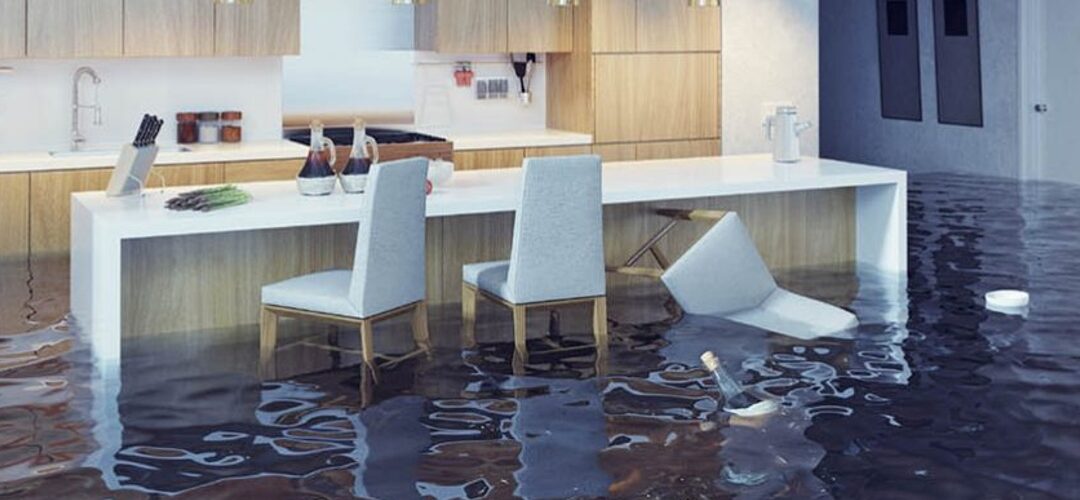After water damage, it’s crucial to assess the extent of the destruction and take prompt action to prevent further damage.
Having a house requires a lot of work. You’ve invested much time, money, and pride in your house, so learning that water damage has occurred may be distressing. You are not alone if you are dealing with this issue. In the United States, 98% of basements will experience some kind of water damage at some point. Every day, almost 14,000 people must cope with water damage issues in their residences.
Critical Steps to Take After Water Damage Occurs
Water will start to harm things as soon as it enters an area where it shouldn’t. Wood flooring can distort, and mold and mildew may begin to grow within a short time. You might have to pay for professional mold removal if you’re not careful.
It has greatly proven beneficial if the action has been taken immediately after seeing signs of water damage. Prompt action is the only thing that can save your belongings and your home from further damage. To elaborate on this further, here is a guide to the dos and don’ts of water damage.
What does water damage look like?
There are 3 basic types of water damage. Water damage restoration protocol depends on the severity and type of water damage. Let’s look at them:
Clean water
Your health is not necessarily in danger from clean water. Perhaps your plumbing burst or your sink overflowed. Both of these situations show clean water damage.
Grey water
Most likely, contaminants in grey water are dangerous. You have a grey water damage problem if your dishwasher leaks.
Black water
Black water is undoubtedly filthy, and it is unhealthy to be around it. Black water damage includes sewage backup in your house.
Many people ask ‘how long does water damage restoration take.’ Depending on the damage’s severity and extent, the restoration process can take 2 days up to 2 months.
The dos and don’ts of water damage
Dos
Clean up what you can
Professionals will handle the hard lifting, but the time you have before they show it is crucial. Use sponges, mops, and rags to remove any standing water as best you can. Get as much of your assets and possessions out of the water’s path as possible. Get rid of any moist rugs there.
Ventilate
Two of the most significant issues that come along with water damage are mildew and mold. Do your utmost to ventilate the space when you discover a leak or water damage. Your windows are open. Turn on the air conditioning in the heat. You may alternate between using the heat and opening the windows in the winter.
Freeze valuable documents
You might be unable to dry documents immediately if you locate any moist ones. You can freeze papers to stop early mildew growth. You may afterward take your time to dry and preserve them gently.
Take pictures
Nobody wants to think back on how their house looked after being flood-damaged, but photos are crucial to the paperwork needed for insurance. To demonstrate the degree of the damage, you can capture them using your phone or camera.
Call your insurance company.
Repairing water damage may be costly. Calling your insurance provider as soon as possible to let them know you’ll file a claim is advised.
Call Zavza Seal LLC
You must know who to call for water damage in walls, floors, and ceilings. Professionals are best suited to manage water restoration. Contact us if you need assistance restoring your house. You can contact us through our website or on Instagram, Facebook, Twitter, and other social media platforms.
Don’ts
Use electronics near wet floors or in a flooded area of the home.
While we know you want to concentrate on removing the water and limiting damage to your house, your and your family’s safety should come first. Avoid attempting to dry the area with a vacuum, especially if standing on a wet floor, and avoid turning on any other appliances in the affected area.
Stand-in rooms with sagged ceilings.
Before entering any damaged rooms, carefully evaluate their condition. The ceiling may droop if there is a leak coming from above. Do not enter the room if you notice drooping because water damage might cause the ceiling to cave in.
Leave wet clothes/fabrics together.
Water damage wall repair is hard enough as it is without having to worry about the development of mold and mildew. Do not leave the fabric glued together in a room with rugs or other materials. The longer the damp cloth stays together, the simpler it is for mold and mildew to form. Separate the fabric pieces and spread them out to dry as soon as possible.
Related Blog Posts:
- How Long Does the Restoration Process Take for Homes With Water Damage?
- What to Do If Your Home Has Water Damage?
- Signs of Water Damage in the Basement Walls
- Water Damage & Mold: Everything You Need To Know in 2023
- Things You Should Know About Water Damage
- Who Do I Call After My House Has Water Damage Restore?
- What Causes Water Damage to Floors and Walls
Related Services:
Our service areas:
Get A Free Estimate

